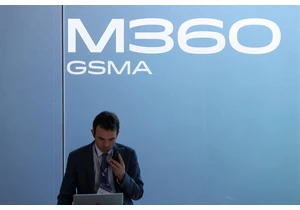If there’s one thing I’ve learned about today’s Bluetooth speakers, it’s that for general consumers, the options are pretty good. However, that doesn't make the process of sifting through the dozens of choices to find the best buy any easier. So I set out to test out some of the most popular models in different price points, from entry level to midrange to expensive. Most of the speakers I tried sounded good on first listen; it was only through side-by-side comparisons that I began to suss out the nuances among the best-sounding ones. Just reading the spec sheets only goes so far. As such, we’re focusing a bit more on audio quality and dynamic range, while also taking into consideration other factors like utility and price. Ultimately, there isn't one best portable Bluetooth speaker out there, but we've found plenty of good options that will fit a range of use cases and price points.
What to consider
Weather-proofing
IP ratings (Ingress Protection) are the alphanumeric indicators you often see in a product’s spec sheet that define the tested resistance of a product to both solid objects (dirt, dust, fingers?) and water. It’s usually a combo of two numbers with the first indicating solid object ingress and the second being water. The former goes from 0 (no protection) to 6 (dustproof). The water-resistance rating goes from 0 (no protection) to 9 (protected against immersion and high pressure jets). When an X is used instead of a number, that means the product wasn’t tested for resistance. If it’s waterproof, it may have some innate resistance to solids, but there’s no guarantee.
IP67 is a common rating these days indicating highly resistant and potentially rugged speakers suitable for outdoor adventures. These are safe for quick dunks in the pool or tub and should be more than OK in the rain or in the shower. They’re also good options for the beach, playground and other rough environs.
Additionally, speakers with ports and a high rating will often include a tight-fitting cover over the charging or auxiliary ports. If you plan on using the ports, that may limit the product's rated ability to fend off the elements.
Consider the IP rating and also how you plan to use your Bluetooth speaker when making your decision. It may be worth splurging on a better sounding model with a lower IP rating if you’ll mostly be using it indoors, for instance.
Battery life
The focus of this guide is on portable Bluetooth speakers, and while “portable” can be a relative term, these devices are generally for people who are likely to find themselves far from a power outlet. These days, around 12 hours of runtime seems to be the baseline but obviously, the more battery life you can get out of a speaker, the better.
That said, be careful when looking at battery specs, as they frequently list a maximum runtime (“up to” x amount of hours). This usually means they tested at a low to mid volume. If you like your tunes loud, it can often end up cutting the expected usage time in half or more. Luckily, some manufacturers also list the expected hours of battery life when used at full volume and that transparency is appreciated.
Additionally, if your Bluetooth speaker also happens to have WiFi connectivity, they're usually designed for always-on functionality. Unlike normal Bluetooth speakers that go to sleep after a short period without use, these will usually stay awake (to listen for your commands) and slowly run down the battery. If you're out and about, you'll want to remember to turn these speakers off manually when not in use to maximize battery life.
Range
Bluetooth range is tricky business. Some companies list their product’s longest possible range, usually outdoors and in an unobstructed line-of-sight test environment. Other companies stick with a 30-foot range on the spec sheet and leave it at that, even though they may be running Bluetooth 4.x or 5.x. That’s likely underselling the speaker's potential, but unpredictable environments can affect range and there’s little point in promising the moon only to get complaints.
I’ve seen signal drop issues when crouching down, with my phone in the front pocket of my jeans, and barely 30 feet away from a speaker inside my apartment. I ran into this issue across several devices regardless of their listed Bluetooth connectivity range.
If you’re hosting a patio party and duck inside, it’s wise to have the source device remain close by just in case. It’s hard to gauge what aspects of any environment may interfere with a Bluetooth signal. In general, take range specs around 100 feet or more as a perfect-world scenario.
Latency
This is a minor mention for those out there who use a speaker for their computer output, or as a mini soundbar solution for setups like a monitor and streaming box. It’s annoying to find that your speaker’s latency isn’t low enough to avoid lip sync issues. Luckily, it seems that most speakers these days don’t often have these problems. Only a handful of the few dozen speakers I tried had persistent, noticeable lip-sync issues. Aside from occasional blips, all of our picks worked well in this regard.
If you plan to frequently use a speaker for video playback, look for devices with the most recent Bluetooth versions (4.x or 5.x) and lower latency codecs like aptX. Also make sure the speaker is close to the source device as distance can be a factor. To avoid the issue altogether, though, consider getting one with a wired auxiliary input.
Best lower mid-range portable bluetooth speakers: $50 to $200
Tribit StormBox Micro 2 ($60)
Bluetooth: 5.3
Battery life: Up to 12 hours
IP Rating: IP67
Aux inputs: N/A
Frequency range: 70Hz - 20kHz
App: No
If you’re just looking for a small speaker that can kick out some decent volume, the Tribit StormBox Micro 2 fits the bill. The audio quality here is fine; it doesn’t stand out in terms of fidelity, but the volume you get from this affordable little speaker is what makes it a good choice. If you’re bopping about outdoors on your bike or chilling in the park, it’s usually more about portability and volume anyway. The rubbery rear strap works well on relatively thin things like belts, backpacks and bike handlebars.
While it’s small and affordable, the speaker supports USB-C charging for your devices in a pinch and you can wirelessly connect two of them for party mode or stereo sound. It also supports voice assistants for both iOS and Android users.
UE Wonderboom 3 ($100)
Bluetooth: N/A
Battery life: Up to 14 hours
IP Rating: IP67
Aux inputs: N/A
Frequency range: 75Hz - 20kHz
App: No
The Ultimate Ears Wonderboom 3 is a tiny yet powerful portable, delivering the biggest sound in its size range that we tested. It’s still a cute, barrel-shaped small speaker with a nubby little strap that probably needs a carabiner to help attach it to most things. But this refreshed model includes a couple of bright new colors, an extra hour of battery life and improved wireless range. With an IP67 rating on top of the company’s five-foot drop test durability, it can go with you almost anywhere and survive to tell the tale.
The audio quality is punchy and bright enough for what you’d expect at this scale and price range. Although there’s no app support or connectivity with the rest of the Ultimate Ears speaker lineup, you can easily pair it with speakers like the Wonderboom 2 or Megaboom 3 for stereo sound. There’s also an outdoor mode button on the bottom that boosts the mid and high range to help the audio carry over a greater distance.
Soundcore Motion+ ($107)
Bluetooth: 5.0
Battery life: Up to 12 hours
IP Rating: IPX7
Aux inputs: 3.5mm
Frequency range: 50Hz - 40kHz
App: Yes
This nondescript wedge of a wireless speaker could easily slip under your radar, but it’s worth a listen. It has a bright and bassy output, which is helped along by Qualcomm aptX support for hi-res audio. This Anker Soundcore device has a solid, slightly heavy build with a metal front speaker grille, a soft-touch rubberized exterior (that loves your greasy fingerprints) and IPX7 water resistance. While it’s not the lightest or most portable, it has good sound, especially for the price. Plus the app offers EQ customization, so you can fine tune to your liking.
There’s also a 3.5mm aux input for wired connections. That’s fortuitous, as we found that this small speaker works well as a mini soundbar alternative and the wired input offers a foolproof connection.
JBL Flip 6 ($130)
Bluetooth: 5.1
Battery life: Up to 12 hours
IP Rating: IP67
Aux inputs: N/A
Frequency range: 63Hz - 20kHz
App: Yes
JBL’s Flip 6 deserves high marks for overall sound quality, durability and volume considering its size, and those features make it the best JBL speaker for most people. As with most JBL speakers, it has a good dynamic range from solid lows to crisp highs with volume tipped towards higher registers. The cylindrical shape works well on its side or even standing on its end to save desk space. It has a capable carrying (or hanging) strap and raised buttons you can discern in the dark.
The JBL Portable app gives you a 3-band EQ to customize the sound profile if desired and if you have two Flip 6 speakers, you can run them in stereo mode. If you happen to have a mix-and-match assortment of different PartyBoost-enabled JBL devices, you can connect multiple speakers for a bigger sound.
Bose SoundLink Flex ($149)
Bluetooth: 4.2
Battery life: Up to 12 hours
IP Rating: IP67
Aux inputs: N/A
Frequency range: N/A
App: Yes
While the $99 Bose SoundLink Micro is half the size, we found that it's definitely worth the extra $50 if you trade up to the SoundLink Flex. While it’s still not a room filler, the speaker offers some bright, dynamic finesse to your tunes, along with a significant amount of bass for its size. It’s similar to the scale of a small clutch bag, with a very small strap for carabiner-type hanging. Much of the exterior is sheathed in soft-touch silicone, except for the powder-coated steel speaker grilles. Like others in this range, the speaker is IP67 rated so it can handle the elements and sound good doing it.
Setup and connecting to the speaker should be done from within the aptly named Bose Connect app. You can also turn off voice prompts (which can become annoying) and pair with similar speakers for either party mode or stereo.
Note: Some users running Android 12 may encounter connectivity issues with the Bose Connect app. The company is working to resolve the problem.
Marshall Emberton II ($170)
Bluetooth: 5.2
Battery life: Up to 30 hours
IP Rating: IP67
Aux inputs: N/A
Frequency range: 60Hz - 20kHz
App: Yes
The recently released Emberton II Bluetooth portable from Marshall has a bumped up set of specs that make it a better value than the previous gen. This clutchable rectangular slab still has a pair of 10-watt full-range drivers and passive radiators to deliver the brand’s signature sound. It may not be the loudest in its size range, but it focuses more on balanced output than raw power. There’s still 360 sound as well, making it a good companion for small get togethers. Although, with its 60hz low end threshold, you’ll find a better bass response when there are surfaces to reflect off of, and not so much if it’s in the middle of a table.
This new model now offers up to 30 hours of listening on a charge (10 hours better than before) and a more rugged IP67 rating. There’s also a new ability to pair with another Emberton II or Willen II using the new “Stack Mode”. The range between them is limited, however, so stacking them probably is the best way to go. Additionally, Marshall is offering a more environmentally friendly product than before, using 50 percent post-consumer plastics in its construction.
JBL Charge 5 ($180)
Bluetooth: 5.1
Battery life: Up to 20 hours
IP Rating: IP67
Aux inputs: N/A
Frequency range: 60Hz - 20kHz
App: Yes
If you’re willing to spend a little more for bigger sound, more hours of battery life and a USB-C port to charge your devices, the midrange JBL Charge 5 is a great upgrade over the Flip 6. It has the same bright output and capable low end, but in a slightly larger package. If you’re looking for a smallish portable speaker, but something capable enough to entertain a few guests, this works.
Best mid-range portable bluetooth speakers: $200 to $450
Monoprice SoundStage 3 Portable ($250)
Bluetooth: 4.2
Battery life: Up to 10 hours
IP Rating: N/A
Aux inputs: Optical, 3.5mm and RCA, plus an RCA sub output
Frequency range: 42Hz - 20kHz
App: No
Portable Bluetooth speakers don’t always have to be rugged to be good. The
Accedi per aggiungere un commento
Altri post in questo gruppo

Meta has offered up a lucrative new executive bonus plan, accord

While 20th-century heists involved scoping out a location, recruiting a person on the inside and having a daredevil getaway driver waiting outside, the 21st-century version looks more like what Byb



Meta has offered up a lucrative new executive bonus plan, accord

On March 3, Mobile World Congress will kick off in Barcelona, Spain. While it’s not the premier show it once was, many of the smartphone industry’s leading players still attend the conference and f

